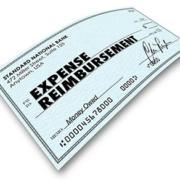When do 501(c)(6) organizations risk their exempt status?
Even when they’re nonprofits, trade associations and chambers of commerce generally qualify for a tax exemption under Section 501(c)(6) of the Internal Revenue Code, not Sec. 501(c)(3). And these “business leagues” (as the IRS terms them) must adhere to a different set of rules. In fact, if you haven’t looked at the rules recently, your organization may not be in compliance and could be risking its exempt status.
Potential business league violations
Business leagues exist to promote their members’ common interests and improve business conditions of “one or more lines of interest.” Typically, these groups get into trouble if they interpret terms such as “promote common interests” and “improve business conditions” too broadly. For example, your organization might provide customized sales training for only some of its members. That’s generally a no-no.
Another potential violation is engaging in business that’s normally carried out on a for-profit basis. And groups that are primarily social or that exist to promote a hobby usually don’t qualify for 501(c)(6) status.
Group vs. individuals
To avoid IRS scrutiny, you must be able to differentiate between qualified and nonqualified activities. For example, you’re typically allowed to attempt to influence legislation relating to the common business interests of your members. You can also test and certify products, establish industry standards and publish statistics on industry conditions to promote your group’s line of business. In addition, you’re allowed to research effective business practices to share with your members.
But you should limit activities that benefit specific members rather than your industry or profession as a whole. These might include:
- Selling advertising in member publications,
- Facilitating the purchase of supplies for members, and
- Providing workers’ compensation insurance to members.
The key is your association’s “primary purpose.” Most 501(c)(6) groups perform some activities that don’t primarily serve common interests. But these activities should be limited in scope and number.
Even when certain activities don’t threaten your exempt status, performing services for members can trigger unrelated business income tax (UBIT). Typically, members pay for such services directly, instead of through dues or other common assessments. Depending on the services your association provides and the revenues raised, additional reporting may be required and you may owe UBIT.
When to consider a for-profit offshoot
If you find your organization is performing more (or more substantial) services for individual members than is “safe,” you might consider forming a separate for-profit organization. Then any services that benefit individuals can be shifted under this taxable umbrella and you can preserve your association’s not-for-profit status. Contact us for information about how to establish a for-profit offshoot.
© 2023












